2023 Genesis G90 First Drive Review: No more compromises

Reviewing the Genesis G90 in the past has always been a game of qualifiers. It drives really well (for the money). The interior is a massive step in the right direction (for a Genesis). That tech sure is snazzy (but not as good as the German stuff). And so on. In a way, these are all backhanded compliments. Ask someone to put their money on a single flagship luxury sedan, and even though the G90 is really good, most buyers in this class are still plunking down the big bucks for a Mercedes-Benz S-Class or BMW 7 Series.
The 2023 Genesis G90 faces this uphill battle against German prestige once more, but as a fully revamped model that is far better equipped to take on the best in the world. To see if it’s strong enough to land any punches against the best, a road trip and plentiful seat time is in order. There’s nothing a big, long sedan excels at better than scarfing up highway miles, but is the new G90 the one you want for this task?
If catching eyes and attention on the road is a desired outcome, then the G90 aces this test. There isn’t a subtle angle to the G90, from the impossibly thin “Micro Lens Array” headlights up front to the width-stretching LED taillights out back. Its proportions and general design need no highlighting — the car is a stunner. But the details deserve to be highlighted. Elements like the elongated lights that stretch into the front fenders, the bronze-painted brake calipers and the trapezoidal exhaust tips are all examples of Genesis letting its designers loose to make something genuinely unique.
The powertrain under the G90’s clamshell hood — it combines the hood and fenders to provide a panel gap-less look — keeps up with the Joneses if you spec the upgraded model dubbed “E-Supercharger.” In this as-tested spec, the 3.5-liter twin-turbo V6 is supplemented by a 48-volt mild-hybrid system that brings an electrically-driven supercharger into the fold to both smooth accelerative responses and provide a boost in power. Total system output is 409 horsepower and 405 pound-feet of torque, which is 34 hp and 14 lb-ft of torque more than the base G90 without the mild-hybrid system. Even if you skip the E-Supercharger, the base G90’s engine is an upgrade over the smaller 3.3-liter twin-turbo V6 it made do with before — there is no more V8 for 2023.
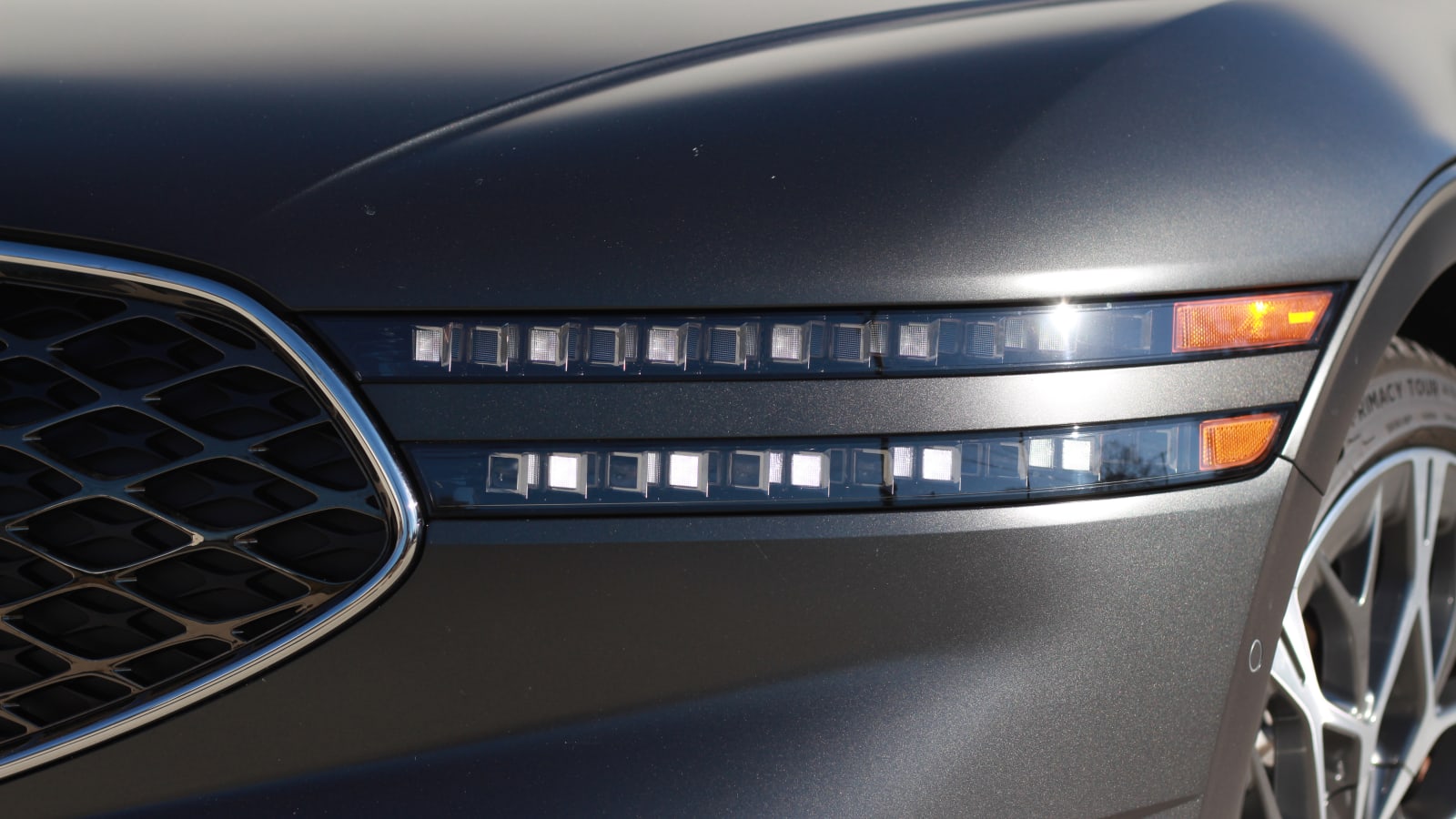
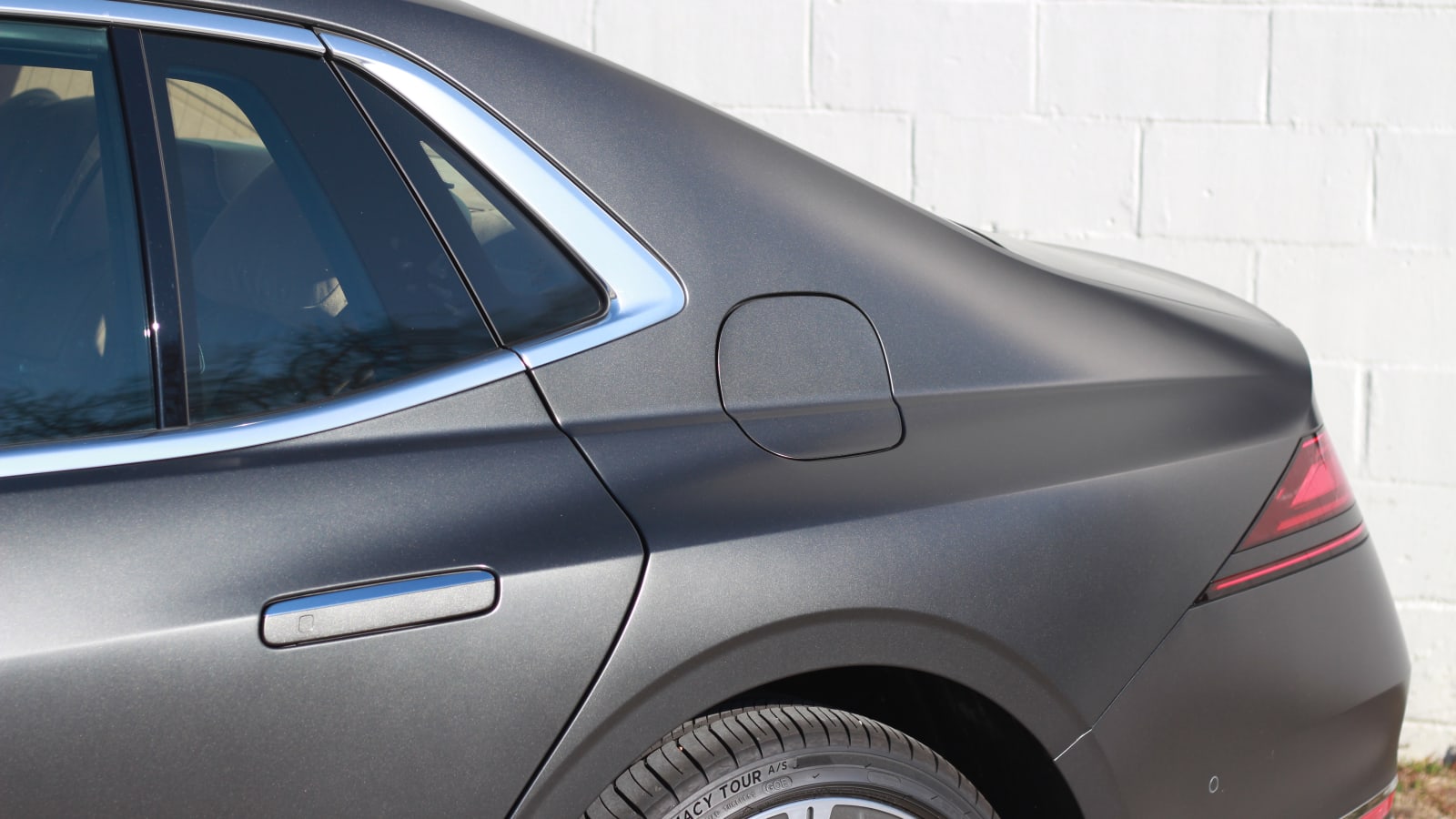
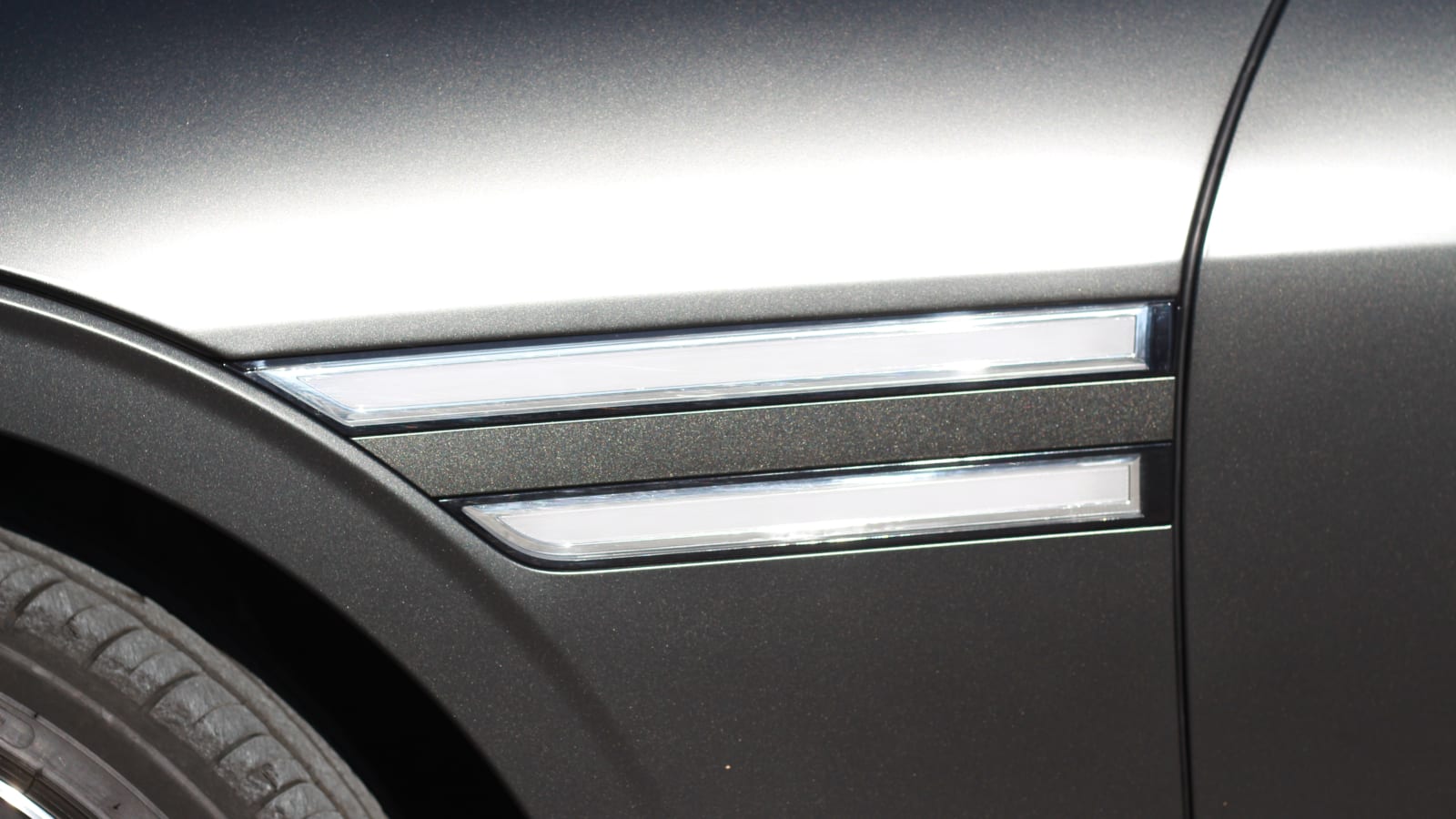
This engine, while not as mighty as the boosted V8 options you’ll find in a Mercedes-Benz S 580 or BMW 760i, is an ideal unit for a sedan such as this one. The start/stop system allows for seamless coasting to a halt and natural initial acceleration. Plus, the supercharged boost from the get-go negates any lag from the engine before the turbos spin up, ultimately providing that oh-so-desired effortless glide from light-to-light. The melt-into-the-background eight-speed transmission does fine work of not getting in the way of this engine’s smoothness, too. When you do call upon all 409 ponies, the G90 leaps to action with a firm shove into the seat — 0-60 mph feels like it arrives in just over 5 seconds. The muted rush of the V6 is amplified in the G90’s Sport driving mode, but it’s never intrusive or unrefined, maintaining a quiet sense of luxury at all times.
Fuel economy may not be a buyer’s concern at the price point of full-size executive sedans (and if it was, they’d probably go all-electric), but over a long highway road trip, we handily bested the G90’s 24 mpg highway rating, coming in with a final average of 29 mpg. The electric supercharger doesn’t improve EPA fuel economy ratings — it’s 1 mpg down in the city and 2 mpg down on the highway versus the gas-only model — but the G90 proved shockingly efficient in real-world driving.
In addition to the “E” boost, the mild-hybrid G90 is treated to other niceties that improve how it drives over the standard G90. The big one is the multi-chamber air suspension combined with the “Preview-Electronic Control Suspension” (PECS) we’ve seen previously in various Genesis models. The PECS system functions how we’re accustomed to seeing it work in other Genesis models, as it uses cameras and sensors to detect what’s coming up in the road ahead, then optimizes the electronically-controlled dampers to offer the best-possible ride over the obstruction. Adding the air suspension element, however, is new for the G90 to enhance the ride even further.
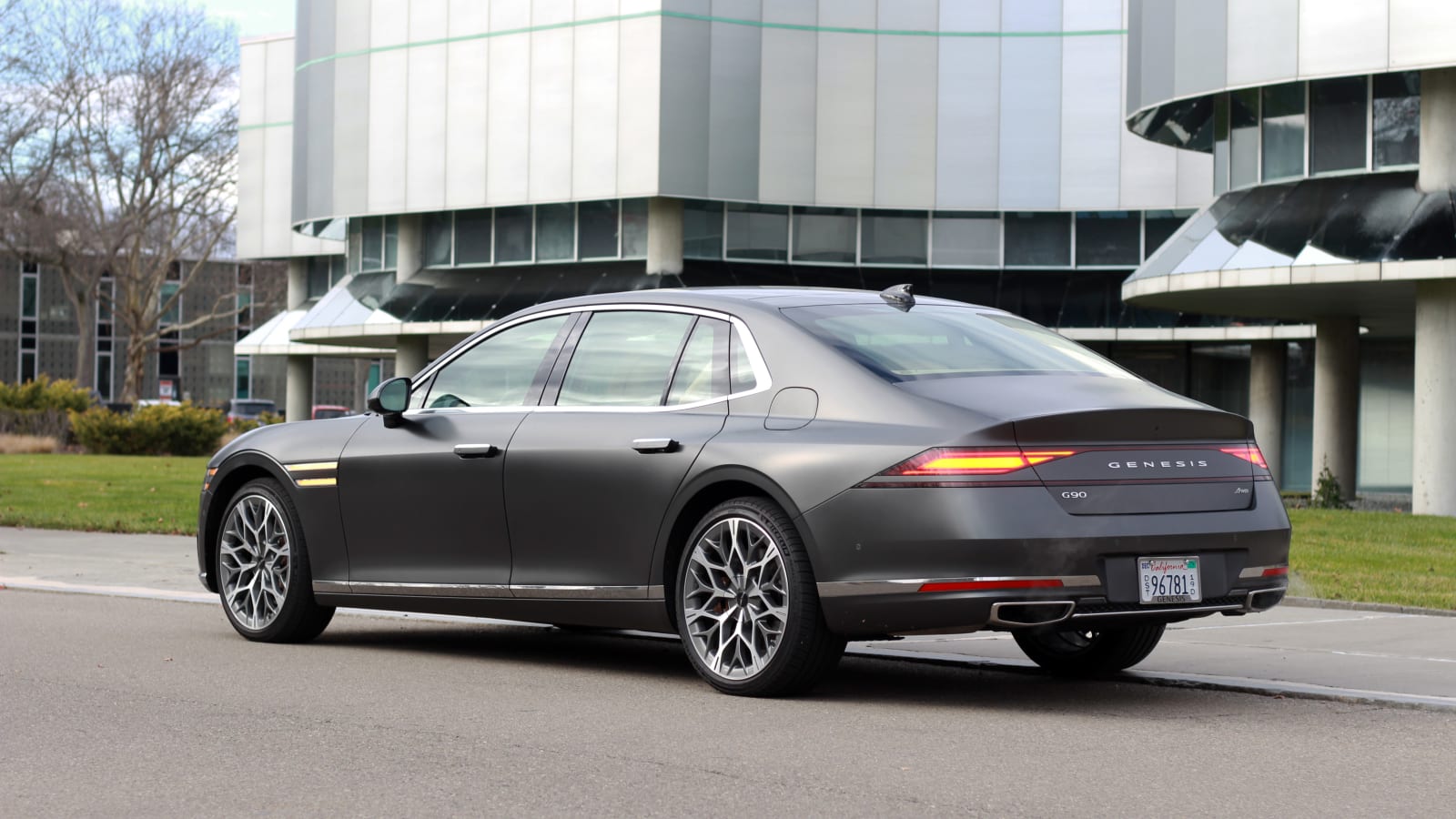
The S-Class and 7 Series feature air suspensions that can be raised or lowered as necessary at the touch of a button, but neither go so far as to automatically do so on slopes/steep drop-offs like the G90 does. Of course, an S-Class can be had with Mercedes’ innovative E-Active Body Control suspension that has exclusive tricks of its own, so two can play at that game.
The last big drive-related bonus for the mild-hybrid G90 is the addition of rear-wheel steering, allowing for four-degrees of opposite lock at low speeds and 2 degrees of turn in the same direction as the front wheels. It’s not as impressive as the S-Class’ maximum of 10 degrees, but the feature still greatly enhances this big sedan’s maneuverability in every situation.
Stability and ride comfort both get the highest marks possible. You can’t do any better than this lest you buy something as expensive as a Mercedes-Maybach or Bentley. The big, intricate 21-inch wheels don’t seem to hurt the G90’s composure. No matter the road quality over a 500-plus-mile road trip, the serenity of comfort and silence could not be broken.

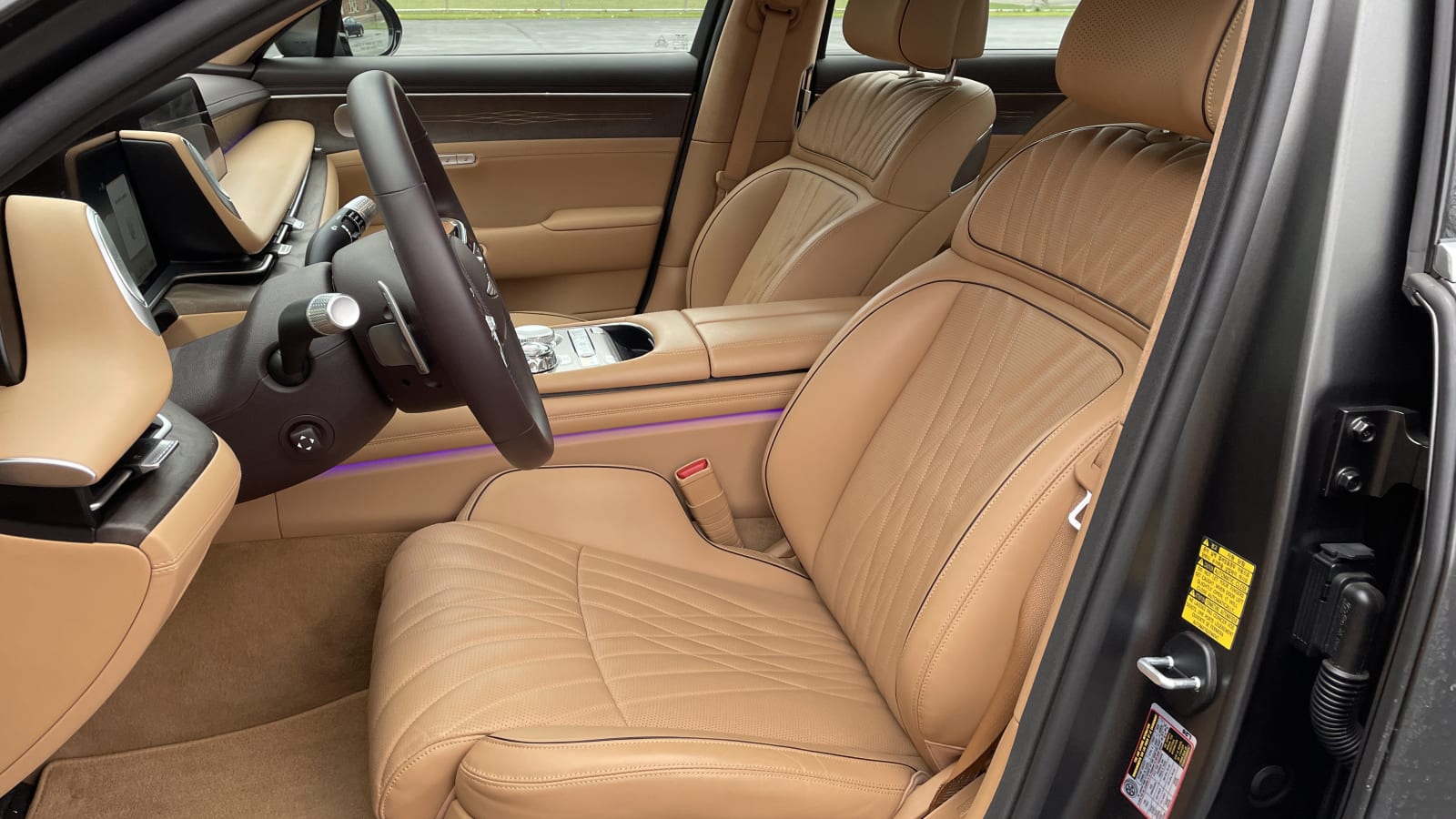
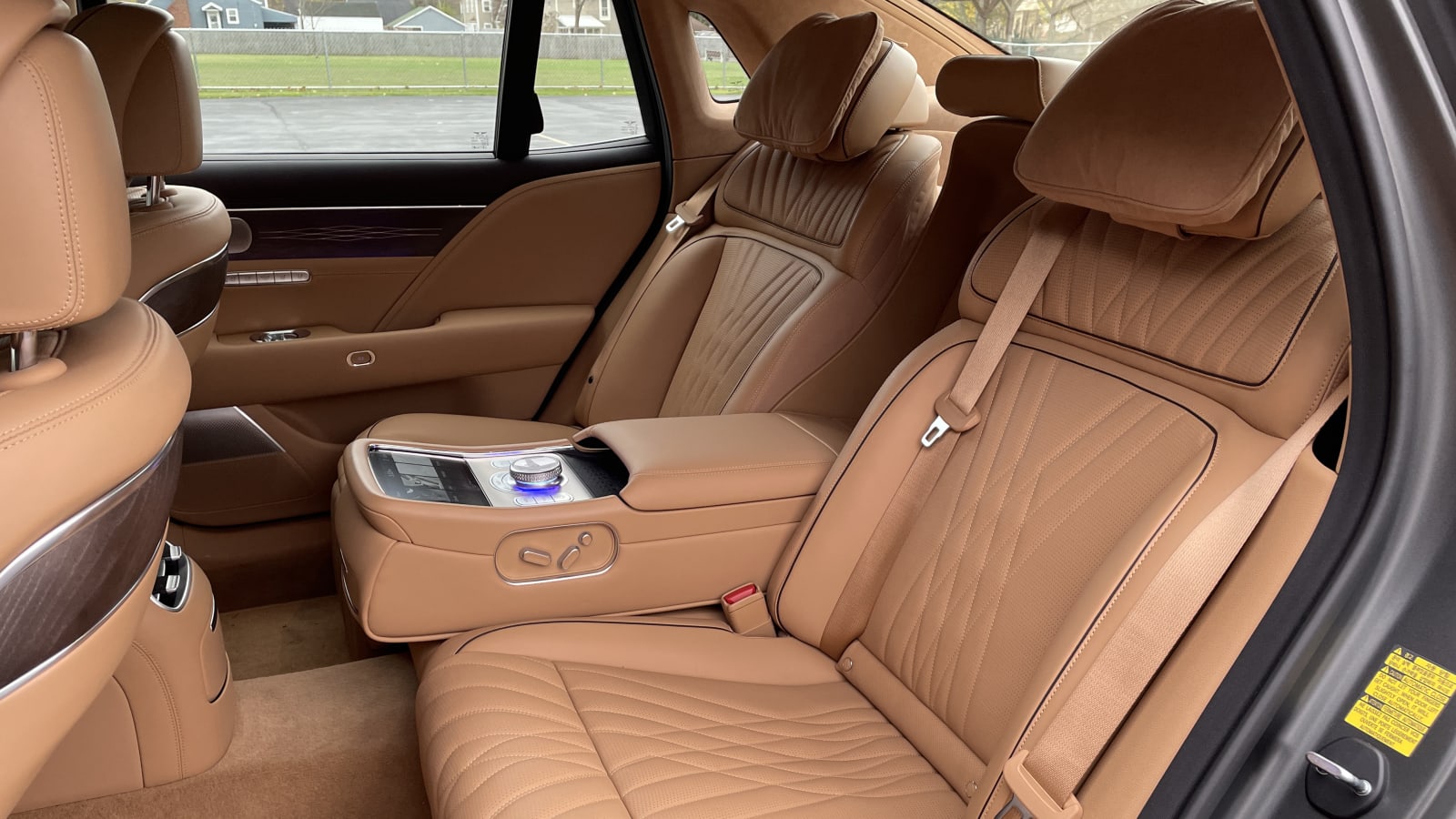
There isn’t much to complain about inside the G90, either. You’d need to try very hard to come up with reasons to prefer this cabin over that of an S-Class, and frankly, there’s a good argument to be made for the G90 over the S-Class here. Where Mercedes went all-in on steering wheel touch controls and one massive central touchscreen to control everything, Genesis essentially adopted a strategy similar to the previous-gen S-Class. That means it’s loaded with beautifully-crafted metal toggles, buttons and knobs to control the car’s vitals. Plus, even where Genesis opts to use a touch-control screen for some climate functions, that screen provides haptic feedback that makes it feel like you’re pressing a real button when interacting with it. You won’t need to dig through menus in a screen to turn on the full-body massaging seats or swap back to Apple CarPlay. A single press of a well-crafted, physical button does the trick, and that right there is luxury.
If you think you’re missing out on futuristic tech features by going with a G90 instead of the alternatives, think again. Every trick in the book from auto-closing doors (press a button or the brake pedal) to extravagant ambient lighting and a superb 23-speaker Bang & Olufsen sound system are onboard. For those planning to be chauffeured around in a G90, the rear seat is really only lacking a fridge filled with champagne flutes. Padded headrests, a full-recline seat (it automatically shoves the front passenger seat forward), a rear touchscreen monitor and a massive center console with any feature you may desire — even a wireless phone charger — are all present. There’s even a speaker in the driver’s headrest to bark out warnings/commands to the driver to ensure those in the rear seat aren’t disturbed by trivial matters like navigation directions or a turn signal click-clacking away.
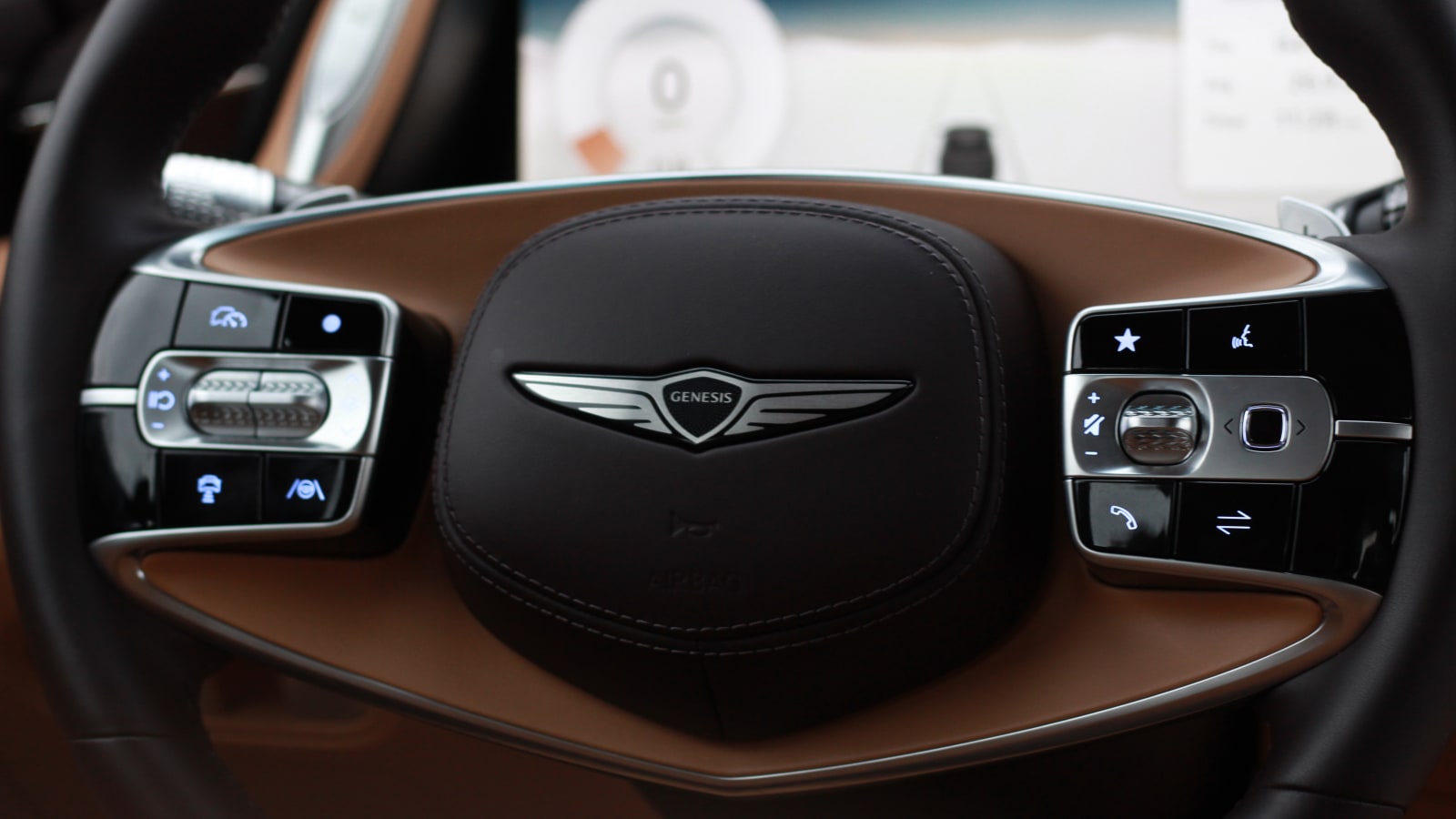
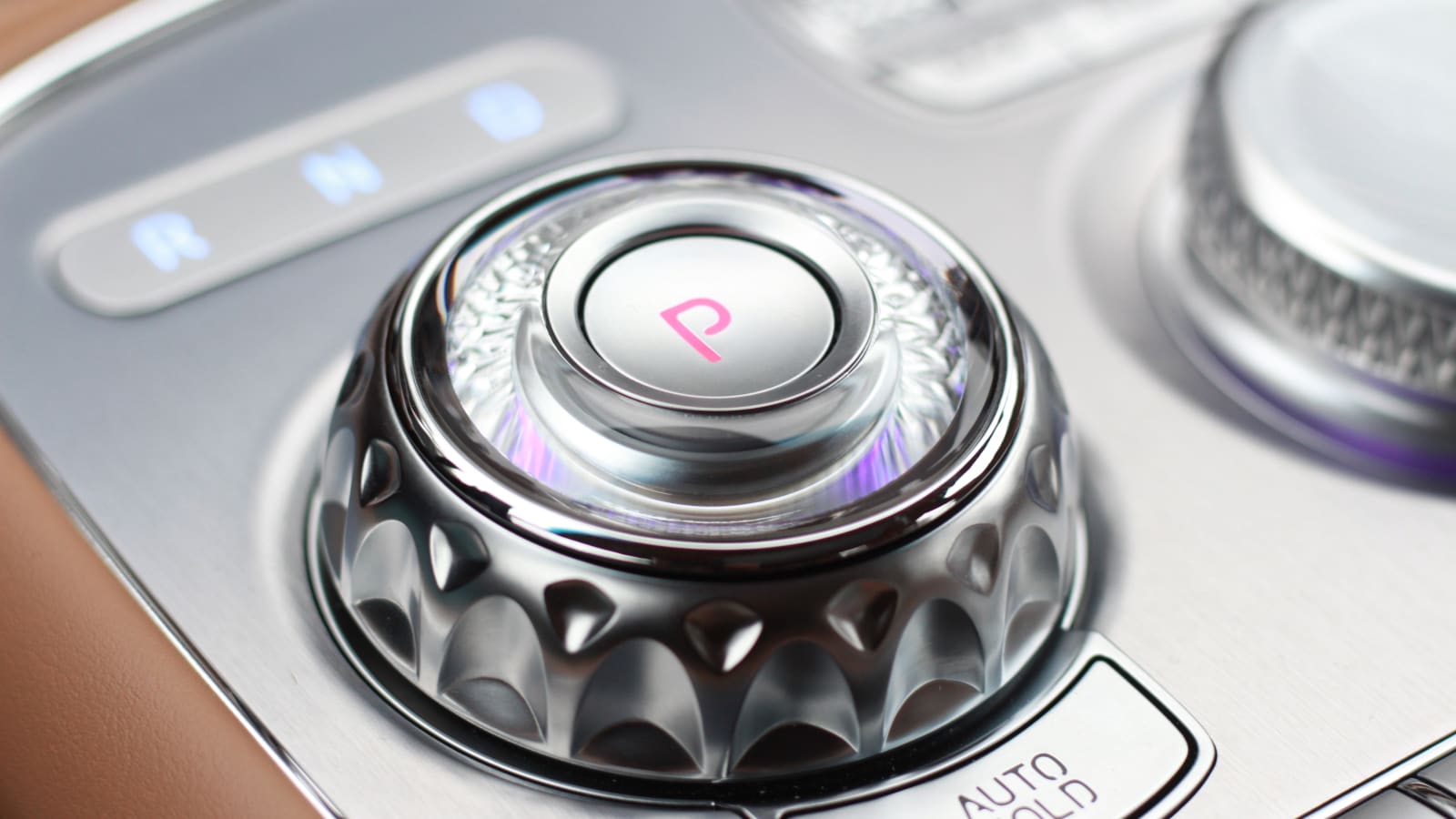
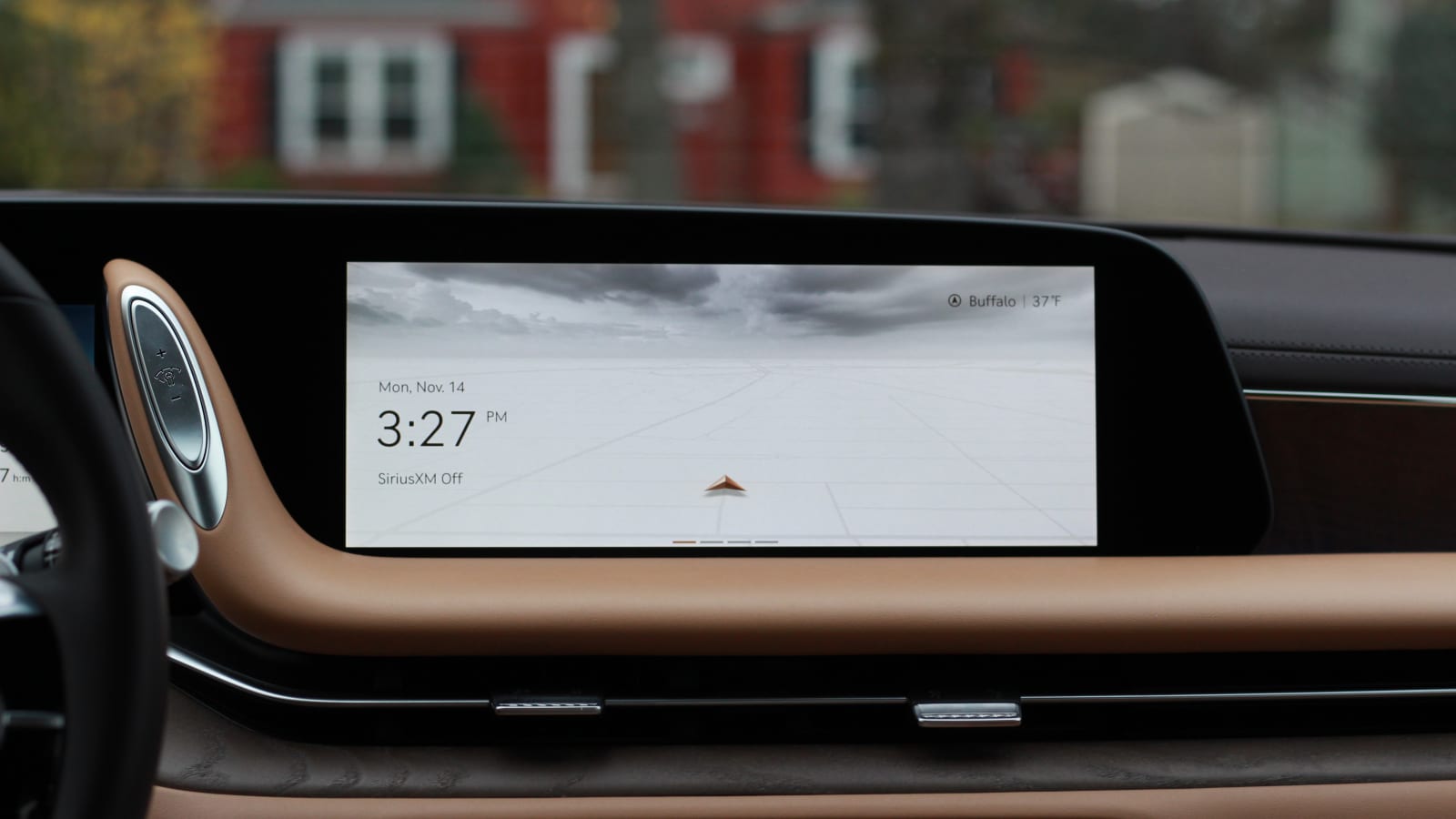
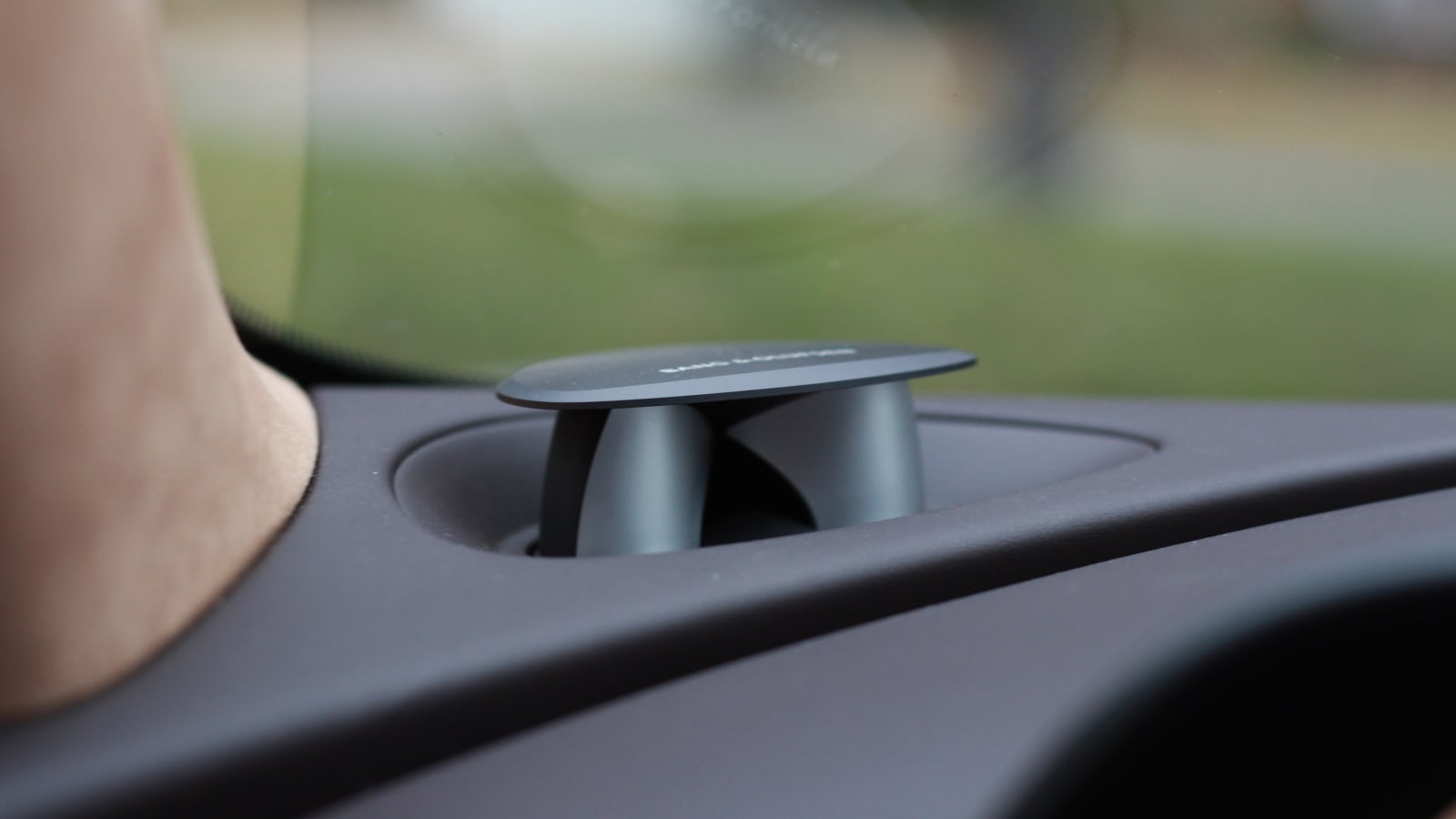
Assuming you’re the driver, though, the G90’s suite of driver assistance systems is top-notch and only plays second-fiddle to GM’s Super Cruise. The G90 uses a new Genesis steering wheel with touch detection to ensure the driver is paying attention, and it works perfectly. Instead of needing to apply a little tug or torque every few seconds, you can just lay a hand or two on the wheel, and the car knows you’re at the helm. We went hundreds of miles without a buzz or warning from the system, which is an improvement upon the otherwise exceptional Highway Driving Assist II system found throughout the Genesis/Hyundai/Kia empire.
The one area in which the G90 still lags behind pricier rivals is when you start to hustle it around a twisty road. Both an S-Class and 7 Series are happy to be pushed, but the G90 is far less willing and capable. For the type of driving these luxury barges will be subjected to, such abilities are of little consequence. But, if you’re the sort who wants to enjoy a mountain pass on a road trip in an executive sedan, the G90’s keys aren’t the ones to grab.
Everywhere else, the new G90 is stupendous. Noise insulation, laminated glass and a slippery shape all contribute to blocking out intrusive outside noises. Add some moderate volume to the audio system, and you won’t even hear a firetruck’s sirens as it whizzes by — ask us how we know. The seats remain comfy for hours on end, and even if you’re not making use of the top-notch massage function, the auto “Ergo-Seat” function helps relieve stress and tension in muscles after spending long stints in the saddle.
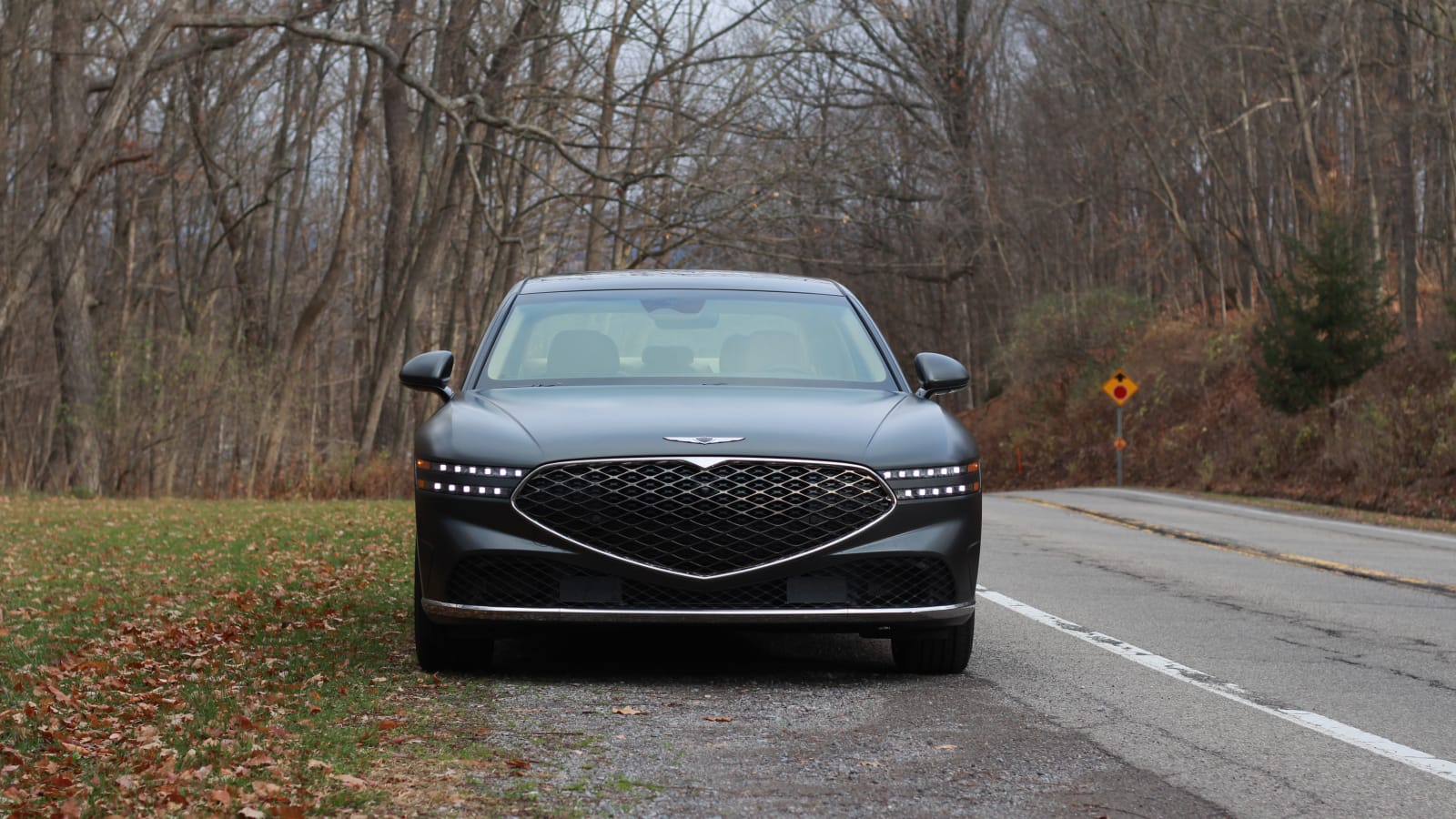
As for the price, the G90 is genuinely priced to sell, and if it doesn’t, that’s a shame. Go for the E-Supercharger trim at $99,795, and it comes with everything. The only boxes you can check are for premium paint options — if you’re a matte paint fan, the $1,500 matte options are worth it. A base G90 without the mild-hybrid system is only $89,495, but we’d highly recommend forking out the extra $10,000 for all the added benefits.
Its price versus that of an S-Class or 7 Series is astronomically lower. Spec out a car with similar equipment, and the fully-loaded G90 is at least $10,000 cheaper versus the German flagships. Of course, the gap can only widen from there. A more apt price comparison is between the G90 and a Lexus LS (also power by a turbo V6), but even with similar prices and equipment, we’d rather park a G90 in the driveway. It’s been a long time coming, but the G90 can finally run confidently with the best and ditch those pesky qualifiers.
Related video:



